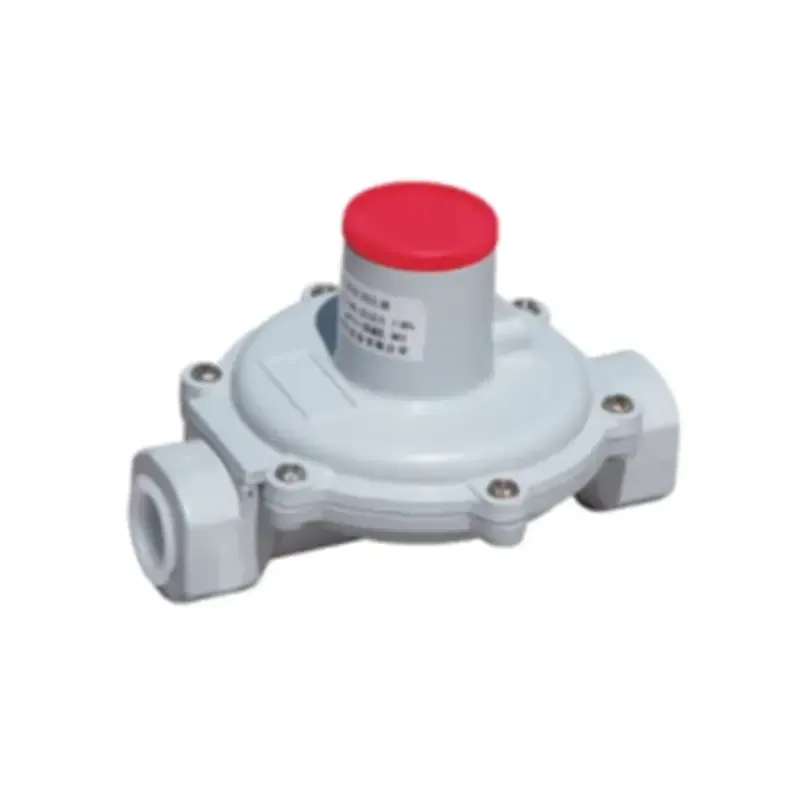
Dec . 12, 2024 13:15
Back to list
gas safety relief valve
Understanding Gas Safety Relief Valves Importance and Functionality
Gas safety relief valves are critical components in various industries, particularly those that involve pressurized gas systems, such as oil and gas, chemical processing, and power generation. These valves play a vital role in ensuring the safety and efficiency of operations by preventing overpressure conditions that can lead to catastrophic failures.
What is a Gas Safety Relief Valve?
A gas safety relief valve is a device designed to open automatically when the pressure of a gas exceeds a predetermined level. It allows the excess gas to escape, thereby reducing the pressure within the system to a safe level. This automatic function helps prevent damage to equipment and safeguards personnel working in the vicinity. Typically, these valves are utilized in systems that handle natural gas, propane, or other combustible gases, making their reliability and accuracy crucial for operational safety.
The Importance of Gas Safety Relief Valves
The significance of gas safety relief valves cannot be overstated
. Here are some key reasons why they are essential1. Preventing Explosions Overpressurization can cause pipelines, tanks, and other gas systems to rupture, leading to explosive incidents. Safety relief valves act as a fail-safe mechanism, diverting excess gas and preventing pressure build-up that could result in disastrous explosions.
2. Protecting Equipment Pressurized systems are designed to operate within specific pressure ranges. Exceeding these limits can lead to equipment failure, costly repairs, and prolonged downtime. By maintaining safe pressure levels, safety relief valves protect critical infrastructure and extend the operational life of machinery.
3. Ensuring Regulatory Compliance Industrial operations are often subjected to stringent safety regulations. Safety relief valves help organizations comply with these regulations by demonstrating that they have measures in place to mitigate risks associated with overpressure conditions.
gas safety relief valve

4. Enhancing Operational Efficiency By controlling gas pressure effectively, safety relief valves contribute to the overall efficiency of gas systems. A well-maintained safety valve can optimize processes, reduce wastage, and improve the reliability of gas supply.
How Gas Safety Relief Valves Work
Gas safety relief valves operate based on a simple mechanical principle. They consist of a valve seat, a spring mechanism, and a discharge pipe. The spring is adjusted to a specific pressure setting, which is the maximum allowable pressure for the system. When the internal pressure exceeds this limit, the force exerted by the gas overcomes the spring pressure, causing the valve to open. As the valve opens, the excess gas is released through the discharge pipe, thus reducing the pressure in the system. Once the pressure drops back to a safe level, the spring closes the valve, sealing the system.
Maintenance and Inspection
Regular maintenance and inspection of gas safety relief valves are vital for ensuring their proper functionality. Factors such as wear and tear, corrosion, and the effects of high temperatures can compromise a valve’s performance. Routine checks should include
- Visual Inspections Look for signs of damage, corrosion, or leaks, which can indicate malfunction. - Functional Testing Regularly test the valve to ensure it opens and closes at the specified pressure. - Replacement of Parts If wear is detected, consider replacing parts like seals and springs to maintain optimal performance.
Conclusion
Gas safety relief valves are indispensable devices that protect both personnel and equipment in gas handling operations. With their ability to mitigate the risks associated with overpressure environments, they contribute significantly to the safety and efficiency of industrial processes. Investing in the right safety relief valve, coupled with diligent maintenance and adherence to safety protocols, is crucial for any operation dealing with pressurized gases. As industries evolve and expand, the role of gas safety relief valves will remain a cornerstone of safe operational practices.
Next:
Latest news
-
Safety Valve Spring-Loaded Design Overpressure ProtectionNewsJul.25,2025
-
Precision Voltage Regulator AC5 Accuracy Grade PerformanceNewsJul.25,2025
-
Natural Gas Pressure Regulating Skid Industrial Pipeline ApplicationsNewsJul.25,2025
-
Natural Gas Filter Stainless Steel Mesh Element DesignNewsJul.25,2025
-
Gas Pressure Regulator Valve Direct-Acting Spring-Loaded DesignNewsJul.25,2025
-
Decompression Equipment Multi-Stage Heat Exchange System DesignNewsJul.25,2025

